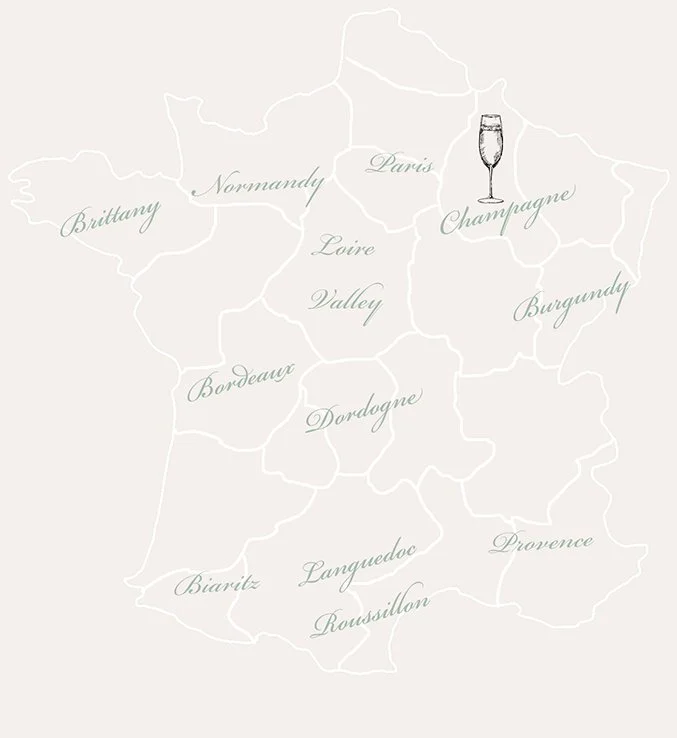Le plat principal in Champagne Ardennes
Cacasse à Cul Nu
From the Ardennes, cacasse à cul nu is a rustic dish whose name translates to “bare bottom,” a reference to its humble origins as a meatless meal for the poor. This hearty fricassée of potatoes, onions, and garlic is cooked in a roux, traditionally prepared in a cast-iron pot rubbed with bacon for a hint of flavor. Modern versions often enrich it with smoked sausage, bacon, pork, or chicken. A full-bodied white Burgundy such as Meursault Les Charmes Premier Cru, with its citrus, honeyed notes, and buttery texture, is the perfect pairing for this comforting potato-based specialty.
Potée Champenoise
Also called Champagne Joute or simply La Joute, this winter stew is a beloved regional classic. Seasonal vegetables such as carrots, turnips, cabbage, and potatoes are simmered with a bouquet garni, while smoked Ardennes ham, sausages, and chicken add depth and richness. A glass of rosé Champagne — made with a touch of Pinot Noir or Pinot Meunier red wine — brings body and red fruit notes that complement the earthy root vegetables and smoky meats beautifully.
Pieds de Porc à la Sainte-Menehould
A true gourmet delicacy from the Marne, pieds de porc à la Sainte-Menehould (pig trotters) date back to at least 1435, when they were served to King Charles VII during a visit to the town. The trotters are first simmered with carrots, onions, garlic, white wine, and herbs before being dredged in egg and breadcrumbs and seared until golden. Traditionally enjoyed with mustard, they are celebrated each year at the Foire aux Pieds de Cochon. For the perfect match, try a Blanc de Noirs Champagne from the Vallée de la Marne, where Pinot Meunier imparts lively fruit and refreshing acidity to balance the richness of the dish.
Choucroute de Brienne
A specialty of the Aube, choucroute de Brienne elevates sauerkraut by simmering it slowly in Champagne and chicken stock. Before serving, sausages, ham, bacon, and boiled potatoes are added, creating a festive dish traditionally enjoyed at the annual Fête de la Choucroute in Brienne-la-Château each September. A crisp Blanc de Blancs Champagne, crafted from 100% Chardonnay, makes a superb pairing. Its bright acidity enhances the tang of the sauerkraut, while its brioche and pastry notes — developed from extended lees aging — provide the richness needed to complement the assorted meats.



